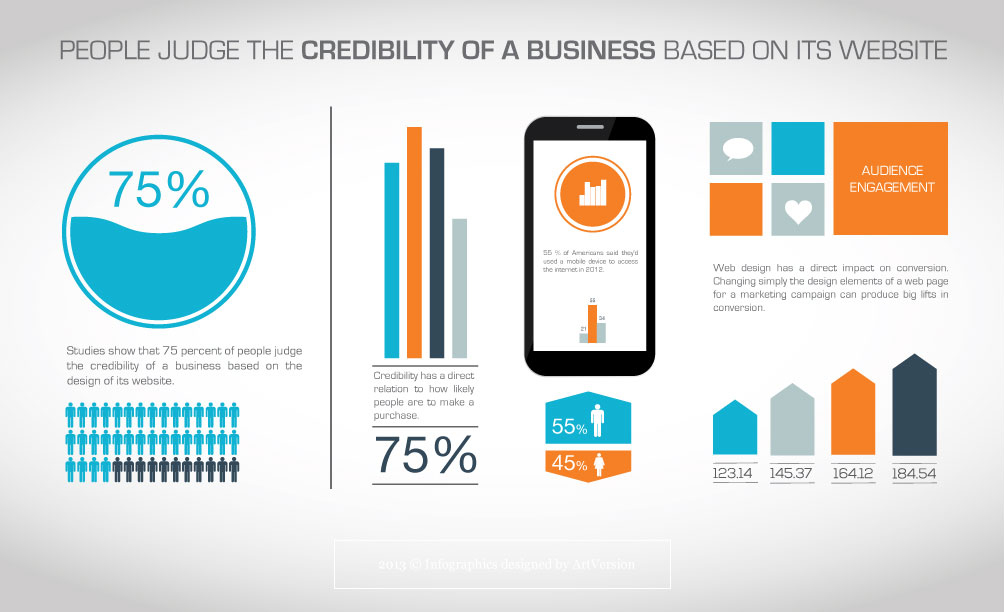The Advancement Of Website Style: From Past To Present
The Advancement Of Website Style: From Past To Present
Blog Article
Material By-Pappas Hyldgaard
In the past, websites were easy and concentrated on information. Navigating was direct, and layout was for desktops. Now, individual experience is crucial. Data overviews layouts for simple navigating. Responsive formats match various devices. Today, dark setting lowers strain, and minimal menus enhance navigation. Interactive features engage individuals, and vibrant visuals attract attention. AI combination enhances interaction. See just how layout has progressed to boost your on-line trip.
Very Early Days of Website Design
In the very early days of website design, simpleness reigned supreme. Internet sites were standard, with minimal colors, font styles, and formats. The focus was on supplying details instead of showy visuals. Users accessed the internet via sluggish dial-up connections, so rate and functionality were crucial.
Navigating menus were straightforward, normally located at the top or side of the web page. Web sites were created for computer, as mobile browsing wasn't yet prevalent. Material was king, and designers prioritized simple readability over complex layout components.
HTML was the key coding language made use of, and developers needed to work within its constraints. Computer animations and interactive attributes were minimal compared to today's criteria. Websites were fixed, with little vibrant content or personalized user experiences.
Rise of User-Focused Style
With the advancement of internet site layout, a change in the direction of user-focused design principles has come to be increasingly popular. Today, developing internet sites that focus on customer experience is important for involving visitors and achieving service objectives. User-focused design involves understanding the demands, choices, and actions of your target market to tailor the internet site's format, content, and includes as necessary.
Developers currently conduct extensive research study, such as individual studies and usability screening, to collect understandings and comments directly from users. This data-driven approach assists in producing instinctive navigating, clear calls-to-action, and aesthetically appealing interfaces that resonate with site visitors. By positioning the user at the center of the design process, web sites can deliver an extra personalized and delightful experience.
Receptive style has additionally become a crucial facet of user-focused design, ensuring that internet sites are optimized for various gadgets and screen dimensions. This adaptability enhances ease of access and use, accommodating the diverse means customers connect with websites today. Essentially, the increase of user-focused design indicates a shift towards creating digital experiences that focus on the needs and expectations of the end customer.
Modern Trends in Website Design
Explore the current fads shaping website design today. One prominent fad is dark setting layout, supplying a smooth and modern appearance while minimizing eye stress in low-light settings. An additional vital fad is minimalist navigating, streamlining menus and boosting customer experience by concentrating on essential elements. Incorporating micro-interactions, such as computer animated switches or scrolling impacts, can develop a much more interesting and interactive site. Responsive style remains critical, guaranteeing seamless individual experiences throughout different gadgets. Additionally, utilizing strong typography and asymmetrical designs can include visual interest and accentuate certain content.
Incorporating AI technology, like chatbots for client support or personalized referrals, improves customer involvement and enhances procedures. https://www.searchenginejournal.com/breaking-bias-tips-iwd/440886/ has also become a substantial fad, with developers prioritizing inclusive layout techniques to deal with varied user needs. Welcoming sustainability by optimizing internet site performance for speed and performance is an additional emerging fad in web design. Working together with user feedback and information analytics to repeat and improve design continually is essential for staying pertinent in the ever-evolving electronic landscape. By accepting these modern-day trends, you can develop a visually enticing, user-friendly internet site that resonates with your audience.
Final thought
As you assess the development of internet site layout from the very early days to currently, you can see exactly how user-focused design has actually ended up being the driving force behind modern trends.
Accept the trip of adjustment and adaptation in web design, constantly keeping the individual experience at the forefront.
Remain current with the current patterns and innovations, and never ever stop evolving your method to produce aesthetically magnificent and straightforward sites.
Evolve, adapt, and develop - the future of website design remains in your hands.
